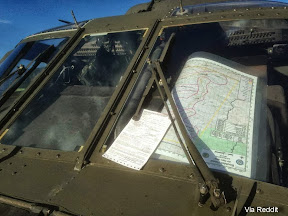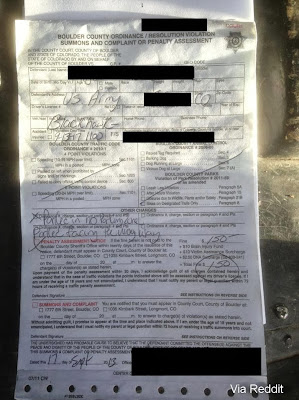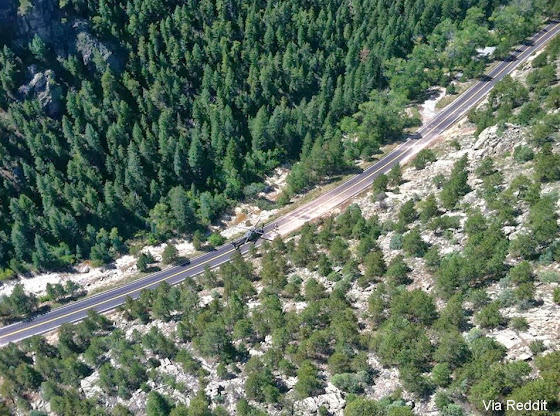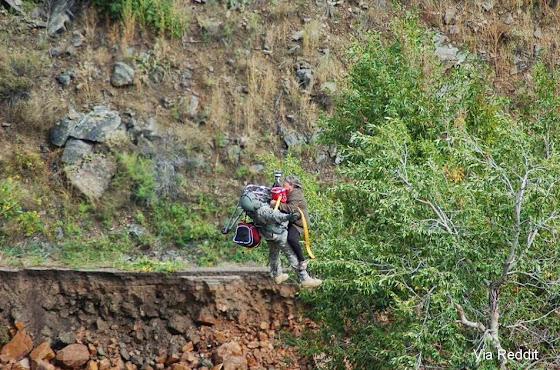[pe2-image src=”http://lh3.ggpht.com/-s4FTglN9w8U/UjWvCPnJ1FI/AAAAAAAAAhU/VSkx7UO17jE/s144-c-o/006.jpg” href=”https://picasaweb.google.com/108306177534978229224/September2013ColoradoSFloods?authkey=Gv1sRgCOa7nK-5oPKyvQE#5923833337961108562″ caption=”South Platte River at 100th & McKay road breaching its banks and flowing into the Sprat Lakes on September 12, 2013. (Ed Dalton)” type=”image” alt=”006.jpg” pe2_single_image_size=”w300″ pe2_img_align=”right” ]
As we close the books on September 2013, the month featured its usual variety of weather but there is only one thing it will be remembered for: rain!
The month opened with temperatures well above normal. In fact, Denver recorded high temperature records three times in the first seven days.
Soon after however, the picture changed dramatically. The ridge that had kept us so warm at the start of the month moved east and low pressure remained over Nevada. This allowed a monsoonal-type flow of moisture to settle in and remain stubbornly in place for days on end.
Heavy rain became the rule starting on the 9th with showers persisting for six of the next seven days. Thornton and all of the Denver metro area recorded extraordinary amounts while areas closer to the foothills were absolutely pounded.
The ensuing floods were devastating for many places along rivers and streams. Thornton weathered the storm relatively well with some minor flooding. Other communities stretching from the foothills to the northeastern plains weren’t so lucky.
The month closed out with relatively typical September weather. Most days were mild but there were a few more showers and some colder temperatures as well.
In terms of temperatures, Thornton saw a monthly average of 64.3 degrees. This was almost a full degree warmer than the Denver long-term average of 63.4 degrees. The Mile High City, as measured at DIA, was as usual a good bit warmer with a September 2013 average of 66.4 degrees.
Neither location was warm enough to make it into the list of top 10 warmest Septembers. The number ten spot is 66.6 degrees.
We recorded 7 days with temperatures at or above 90 degrees. This matched the number Denver recorded.
Thornton saw a high monthly temperature of 99.0 degrees and a low of 33.2 degrees. Denver’s temperatures ranged from 97 degrees down to a low of 38 degrees.
Officially Denver recorded set or tied three record high temperatures:
- September 5, 97 degrees, tied record high last set in 1899.
- September 6, 97 degrees, breaks old record high of 95 degrees set in 1959.
- September 7, 95 degrees, tied record high last set in 1933.
Precipitation was of course the big story for the month and Thornton saw more rain in the month than we have ever recorded at ThorntonWeather.com since coming online in October 2006. By the time September came to a close, we had already bested our top year – with three months to go in 2013.
Thornton recorded a total of 10.15 inches of precipitation. The majority of that, 8.84 inches, fell between the 9th of the month and the 15th. One day, the 11th, dropped 4.76 inches in the rain bucket alone.
For Denver, we once again witnessed the problems with the official station being moved to Denver International Airport. While they did record an abnormally high amount, it lagged other areas closer to town, including at the old Stapleton site.
Denver’s records will show 5.61 inches, well above the September normal of 0.96 inches. That also is enough to put September 2013 into the history books as the wettest September in Denver history. The old record holder was September 1961 with 4.67 inches.
Three daily precipitation records were set at DIA:
- September 12, 1.11 inches, breaks old daily rain record of 0.95 inches set in 2012
- September 14, 2.01 inches, breaks old daily rain record of 0.61 inches set in 1912
- September 23, 0.64 inches, breaks old daily rain record of 0.52 inches set in 2000
No snow fell in September for the 13th year in a row. This ties the record for the longest snow-less September streak with the periods from 1914 through 1926 and from 1882 to 1894. The last time we saw September snow was in 2000 when 0.2” fell. The month averages 1.3 inches.
Click here to view Thornton’s September 2013 climate summary report.
Looking back – Top stories from the September 2013 floods
[pe2-image src=”http://lh3.ggpht.com/-mk2_HTFl7bI/UktlyYkmEQI/AAAAAAAAAwY/a56KaoOMF0Q/s144-c-o/Sept-Temps.jpg” href=”https://picasaweb.google.com/108306177534978229224/Misc?authkey=Gv1sRgCNPjmpm5l5PSOA#5929945250627195138″ caption=”Thornton, Colorado September 2013 temperatures.” type=”image” alt=”Sept-Temps.jpg” pe2_single_image_size=”w560″ pe2_img_align=”none” ]
[pe2-image src=”http://lh3.ggpht.com/-AEI7PqNjsFo/UktlyUJaioI/AAAAAAAAAwU/tglbcxtvlQo/s144-c-o/Sept-Precip.jpg” href=”https://picasaweb.google.com/108306177534978229224/Misc?authkey=Gv1sRgCNPjmpm5l5PSOA#5929945249439451778″ caption=”Thornton, Colorado September 2013 precipitation.” type=”image” alt=”Sept-Precip.jpg” pe2_single_image_size=”w560″ pe2_img_align=”none” ]
CLIMATE REPORT
NATIONAL WEATHER SERVICE BOULDER, CO
240 AM MDT TUE OCT 1 2013
......THE DENVER CO CLIMATE SUMMARY FOR THE MONTH OF SEPTEMBER 2013...
CLIMATE NORMAL PERIOD 1981 TO 2010
CLIMATE RECORD PERIOD 1872 TO 2013
WEATHER OBSERVED NORMAL DEPART LAST YEAR`S
VALUE DATE(S) VALUE FROM VALUE DATE(S)
NORMAL
TEMPERATURE (F)
RECORD
HIGH 97 09/06/2013
09/05/2013
09/04/1995
LOW 17 09/29/1985
HIGHEST 97R 09/06 97 0 95 09/01
09/05
LOWEST 38 09/28 17 21 45 09/28
09/22
AVG. MAXIMUM 78.6 78.5 0.1 80.3
AVG. MINIMUM 54.2 48.3 5.9 52.3
MEAN 66.4 63.4 3.0 66.3
DAYS MAX >= 90 7 3.4 3.6 7
DAYS MAX <= 32 0 0.0 0.0 0
DAYS MIN <= 32 0 0.8 -0.8 0
DAYS MIN <= 0 0 0.0 0.0 0
PRECIPITATION (INCHES)
RECORD
MAXIMUM 4.67 1961
MINIMUM T 1892
1944
TOTALS 5.61R 0.96 4.65 2.95
DAILY AVG. 0.19 0.03 0.16 0.10
DAYS >= .01 10 6.5 3.5 5
DAYS >= .10 10 3.3 6.7 3
DAYS >= .50 3 0.6 2.4 3
DAYS >= 1.00 2 0.1 1.9 1
GREATEST
24 HR. TOTAL 2.39 09/14 TO 09/15 09/25 TO 09/26
09/07 TO 09/07
09/07 TO 09/07
STORM TOTAL MM MM
(MM/DD(HH)) MM 09/26(00) TO 09/26(00)
09/07(00) TO 09/07(00)7
09/07(00) TO 09/07(00)7
SNOWFALL (INCHES)
RECORDS
TOTAL MM MM
TOTALS 0.0 1.3
DEGREE_DAYS
HEATING TOTAL 83 125 -42 69
SINCE 7/1 83 141 -58 69
COOLING TOTAL 133 76 57 113
SINCE 1/1 999 764 235 1235
FREEZE DATES
RECORD
EARLIEST 09/08/1962
LATEST 06/08/2007
EARLIEST 10/07
LATEST 05/05
WIND (MPH)
AVERAGE WIND SPEED 9.2
RESULTANT WIND SPEED/DIRECTION 2/183
HIGHEST WIND SPEED/DIRECTION 45/220 DATE 09/22
HIGHEST GUST SPEED/DIRECTION 64/220 DATE 09/22
SKY COVER
POSSIBLE SUNSHINE (PERCENT) MM
AVERAGE SKY COVER 0.50
NUMBER OF DAYS FAIR 8
NUMBER OF DAYS PC 14
NUMBER OF DAYS CLOUDY 8
AVERAGE RH (PERCENT) 59
WEATHER CONDITIONS. NUMBER OF DAYS WITH
THUNDERSTORM 0 MIXED PRECIP 0
HEAVY RAIN 5 RAIN 8
LIGHT RAIN 15 FREEZING RAIN 0
LT FREEZING RAIN 0 HAIL 0
HEAVY SNOW 0 SNOW 0
LIGHT SNOW 0 SLEET 0
FOG 12 FOG W/VIS <= 1/4 MILE 4
HAZE 1
- INDICATES NEGATIVE NUMBERS.
R INDICATES RECORD WAS SET OR TIED.
MM INDICATES DATA IS MISSING.
T INDICATES TRACE AMOUNT.








